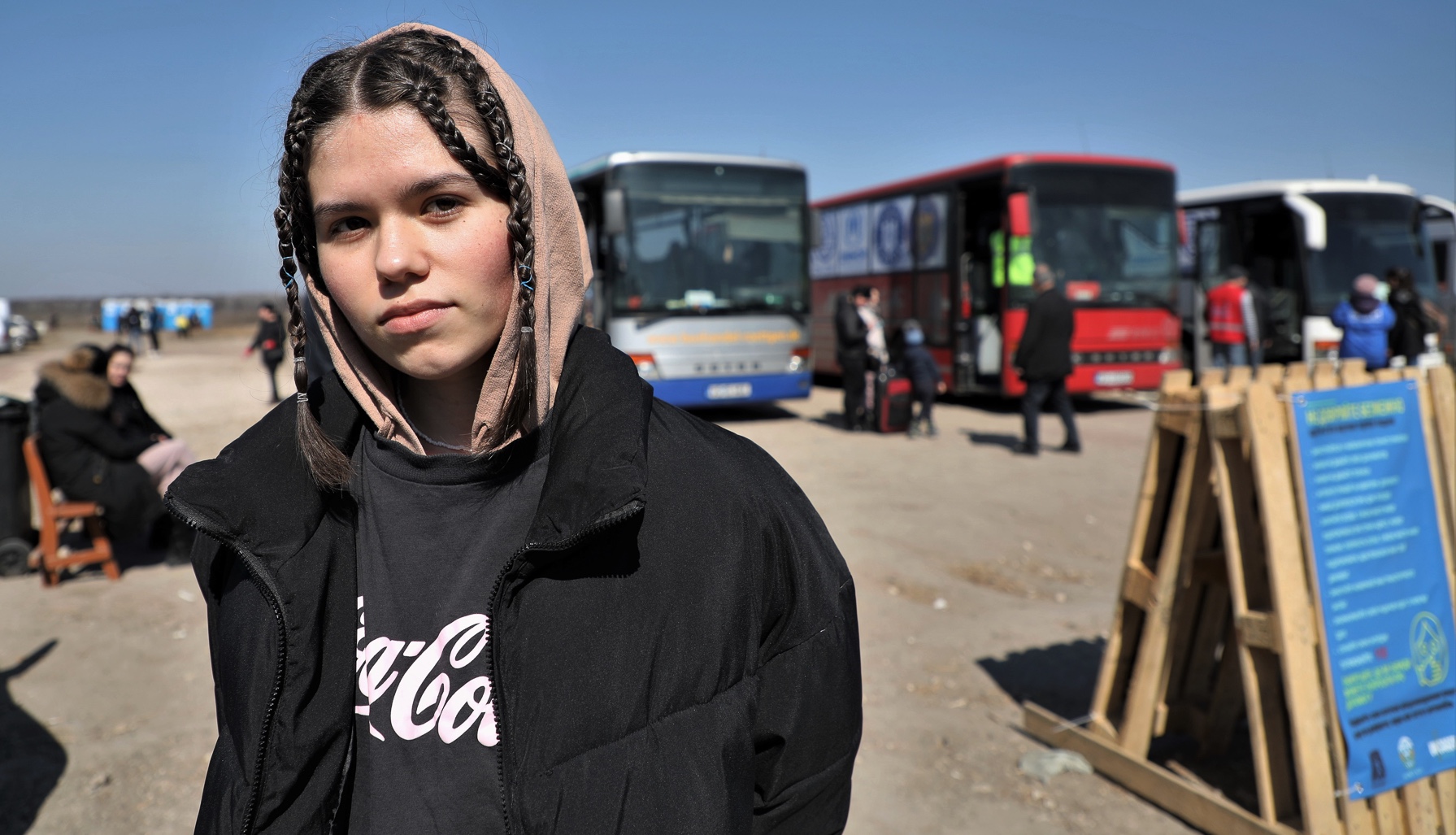Palanca, 30 March 2022 – “I live by the sea; it’s beautiful there – and normally – very quiet,” Violeta says. Known for its beautiful beaches and opera house, Odessa had remained a safe haven for many despite the war.
But as the windows of her beach house shook more violently with each bombardment, Violeta became increasingly worried about the safety of her family.
Back in Odessa, Violeta worked as a nurse in an orphanage, providing support to children with disabilities. When the war started, they had to move the kids to a safer area: “Our priority was to save the children,” as she puts it.
Whenever the air raid siren went off, everyone rushed to bunkers to take shelter, but the closest one to Violeta’s house was kilometres away.


The Palanca border crossing point (left); IOM enumerators conduct surveys to better understand the refugees’ journey (right). Photos: IOM/Monica Chiriac
With her two kids, she decided to quickly pack a suitcase, hop into a car with acquaintances and travel to Palanca, at the border with the Republic of Moldova. Throughout the trip, Daniel, 12, and Angelina, 11, found comfort in taking care of the family’s two cats, Mona and Eva.
“It’s good they have distractions, but nowadays all kids have phones. We can’t hide what’s happening as much as we would like to,” Violeta says.
On 8 March, the Moldovan and Romanian Governments, with support from the International Organization for Migration (IOM) and UNHCR, the UN Refugee Agency, set up a fast-track transfer to support the safe land movement of those fleeing Ukraine, including third-country nationals.
Several buses travel each day from Romania to Palanca – Moldova’s easternmost point located at 2.5 km from Ukraine – to pick up refugees. When they arrive from Ukraine, refugees are greeted by authorities, humanitarian organizations, and volunteers, all eager to assist those newly arrived.

IOM teams are present to provide information about onward transportation and accommodation, among other topics, including crucial counter-trafficking messages to help mothers and their children stay safe. IOM’s Health teams are on site, ready to provide medical and psychological first aid as needed.
Once the buses cross into Romania, they pass by the north-eastern city of Huși, where refugees are welcomed by Romania’s Department for Emergency Situations (DSU) responsible for crisis coordination.
Some spend a night or two there before figuring out their next steps or, like Violeta, they continue their journey to one of the main hubs, Iași or Bucharest, from where they can take a plane elsewhere. Violeta and her children hope to soon be reunited with relatives in France.
Violeta has travelled from Odessa with Daniel (12) and Angelina (11), as well as their two cats. Photos: IOM/Monica Chiriac
Just like Violeta, fearing for the safety of her children, Ina left her husband and the rest of her relatives behind and fled the city of Mykolaiv in southern Ukraine with 19-year-old Yulia and 18-year-old Viktor.
“The bombings started to multiply each day,” she recalls. “Whenever the siren went off, we had to run and hide in a bunker nearby. That is no way to live.”
A cosmetologist back in Ukraine, Ina brought with her all of the products she used back home for work, hoping that she will be able to find similar work abroad.
Yulia, who was studying to become an economist, is now concerned if and how she will be able to complete her studies.


More than 8,000 refugees have used the fast-track transfer since it was launched on 8 March. Photos: IOM/Monica Chiriac
While many decide to wait in Moldova or Romania in hopes that the situation will improve and allow them to return home soon, others have decided to start over elsewhere for now.
After safely arriving in Romania, Ina, Yulia and Viktor stayed in a transit centre for refugees in Bucharest before taking a flight to Germany to meet with relatives.
In a mere four weeks, more than 6,000 refugees, including third-country nationals, have benefited from the fast-track transfer. As more people are fleeing, new transfers are being discussed, aiming to ensure that all those seeking safety can find it.
For people like Ina and her family, it’s an integral part of starting over.
“We hope to go back to Ukraine one day, but we don’t know what we will be going back to,” she says. “We will need to rebuild everything from scratch.”
Yulia, together with her mom Ina and brother Viktor, in Palanca; Yulia with Ina in Mykolaiv before the war. Photos: IOM/Monica Chiriac and family archive
To help those affected by the Ukraine crisis, IOM has launched a Flash Appeal and fundraising page.
If you have been affected by the crisis and need support, please call one of IOM’s Hotlines.
Written by Monica Chiriac and Ana Gnip



